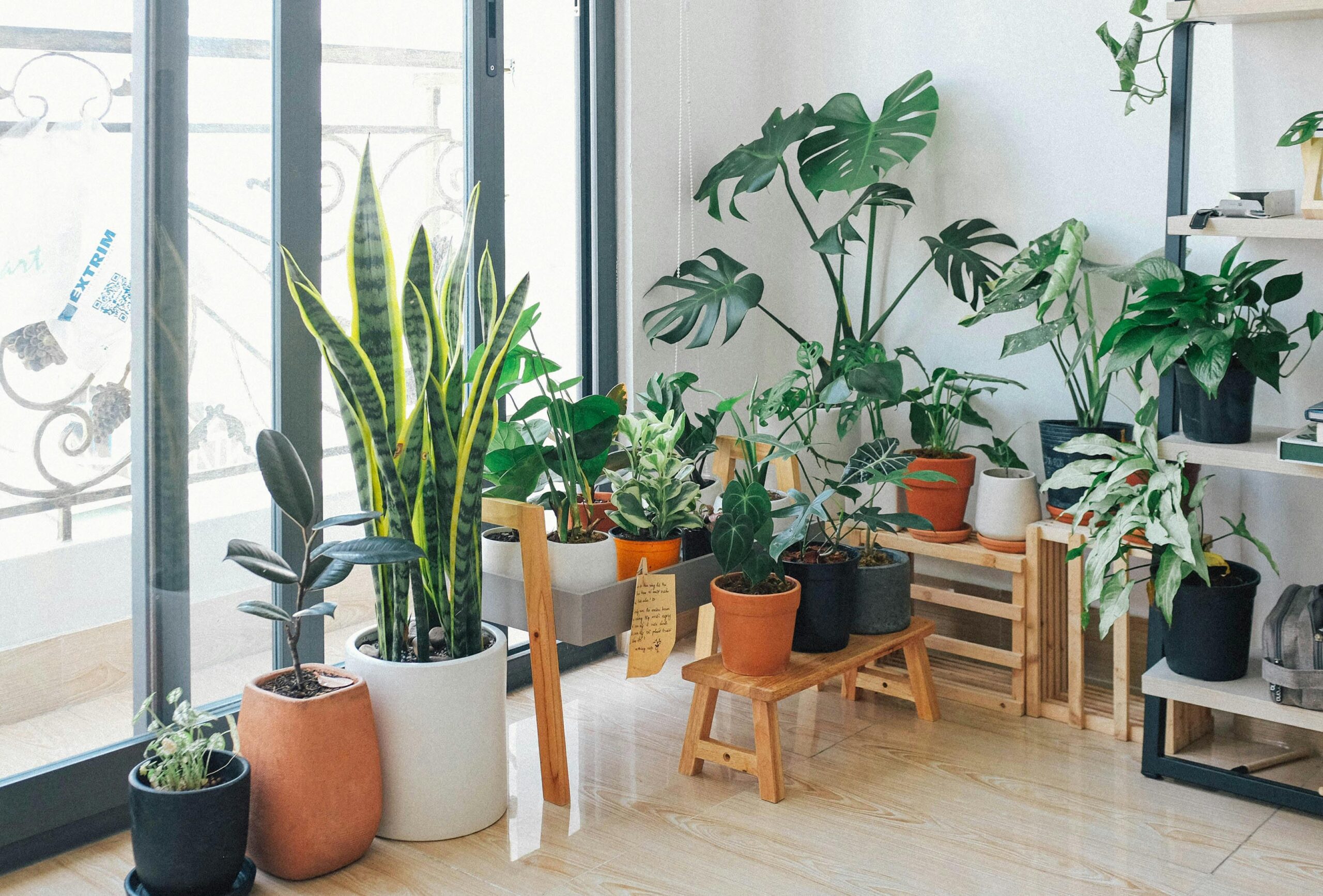Houseplants have long been cherished for their aesthetic appeal and ability to bring a touch of nature indoors. However, their benefits extend far beyond mere decoration. Research has shown that certain houseplants can effectively filter out common indoor air pollutants, including formaldehyde, benzene, and trichloroethylene, thereby improving indoor air quality and promoting better health.
In this guide, we’ll explore some of the best houseplants for improving indoor air quality, helping you create a healthier and more inviting home environment.
The Importance of Indoor Air Quality
Indoor air pollution is a significant concern, as it can have adverse effects on our health and well-being. Poor indoor air quality has been linked to various respiratory issues, allergies, headaches, and fatigue. Additionally, long-term exposure to indoor air pollutants may increase the risk of more serious health conditions such as asthma, cardiovascular disease, and certain types of cancer.
Fortunately, there are steps we can take to improve indoor air quality, and one of the most effective ways is by incorporating houseplants into our living spaces. Not only do houseplants act as natural air purifiers, but they also help to increase humidity levels, reduce airborne dust, and create a calming and rejuvenating atmosphere.
The Best Houseplants for Improving Indoor Air Quality
1. Snake Plant (Sansevieria Trifasciata)
Snake plants are renowned for their ability to filter out formaldehyde, a common indoor air pollutant found in household products such as cleaning agents, paints, and adhesives. Additionally, snake plants are low-maintenance and can thrive in low-light conditions, making them an ideal choice for beginners or those with limited sunlight.
2. Spider Plant (Chlorophytum Comosum)
Spider plants are excellent air purifiers, capable of removing toxins such as formaldehyde and xylene from indoor air. They are also known for their resilience and adaptability, making them a popular choice for busy households. Spider plants are easy to care for and can thrive in a variety of conditions, making them a versatile addition to any indoor space.
3. Peace Lily (Spathiphyllum)
Peace lilies are not only beautiful to look at but also highly effective at removing airborne pollutants such as benzene, formaldehyde, and trichloroethylene. They also help to increase indoor humidity levels, making them particularly beneficial during dry winter months. Peace lilies are relatively low-maintenance and can thrive in low-light conditions, making them an excellent choice for bedrooms or offices with limited sunlight.
4. Boston Fern (Nephrolepis Exaltata)
Boston ferns are known for their lush foliage and air-purifying properties. They are particularly effective at removing formaldehyde and xylene from indoor air, making them a popular choice for homes and offices. Boston ferns thrive in humid environments with indirect sunlight, making them an ideal choice for bathrooms or kitchens.
5. Aloe Vera (Aloe Barbadensis Miller)
Aloe vera not only has soothing properties for skin ailments but also acts as an excellent air purifier. It helps to remove formaldehyde and benzene from indoor air while also producing oxygen at night, making it a perfect bedroom companion. Aloe vera plants require bright, indirect sunlight and well-draining soil, making them easy to care for in most indoor environments.
Tips for Caring for Indoor Plants
- Provide Adequate Light: Most houseplants thrive in indirect sunlight, so be sure to place them near a window where they can receive filtered light throughout the day.
- Water Regularly: Different plants have varying water requirements, so be sure to research the specific needs of each plant and water accordingly. Overwatering can lead to root rot, while underwatering can cause wilting and stress.
- Monitor Humidity Levels: Many houseplants prefer humid environments, so consider using a humidifier or placing a tray of water near your plants to increase humidity levels, especially during the dry winter months.
- Prune Regularly: Pruning helps to promote healthy growth and prevents overcrowding, allowing your plants to thrive and continue purifying the air effectively.
- Use Organic Soil and Fertilizer: To minimize exposure to chemicals and pesticides, opt for organic soil and fertilizer when caring for your indoor plants.
Conclusion
Incorporating houseplants into your indoor environment is not only a simple and effective way to enhance the aesthetic appeal of your living space but also a powerful tool for improving indoor air quality and promoting better health. By selecting the right plants and providing them with proper care and maintenance, you can create a healthier and more inviting home environment for you and your loved ones to enjoy.
FAQs
Q1: Can indoor plants really improve air quality?
Yes, numerous studies have shown that certain indoor plants have the ability to remove common indoor air pollutants, including formaldehyde, benzene, and xylene, thereby improving indoor air quality.
Q2: How many plants do I need to purify the air in my home?
The number of plants needed to effectively purify the air in your home depends on factors such as the size of your living space and the types of pollutants present. As a general guideline, aim for at least one medium-sized plant per 100 square feet of living space.
Q3: Are there any houseplants that are safe for pets?
Yes, several houseplants are considered pet-friendly, including spider plants, Boston ferns, and bamboo palms. However, it’s essential to research each plant’s toxicity level and ensure that they are placed out of reach of curious pets.
Q4: Can indoor plants help reduce allergy symptoms?
Some indoor plants, such as peace lilies and spider plants, have been shown to help reduce airborne allergens and improve indoor air quality, which may provide relief for allergy sufferers.
Q5: What are some low-maintenance indoor plants for beginners?
Snake plants, spider plants, and pothos are all excellent options for beginners, as they are relatively easy to care for and can tolerate a wide range of indoor conditions.



